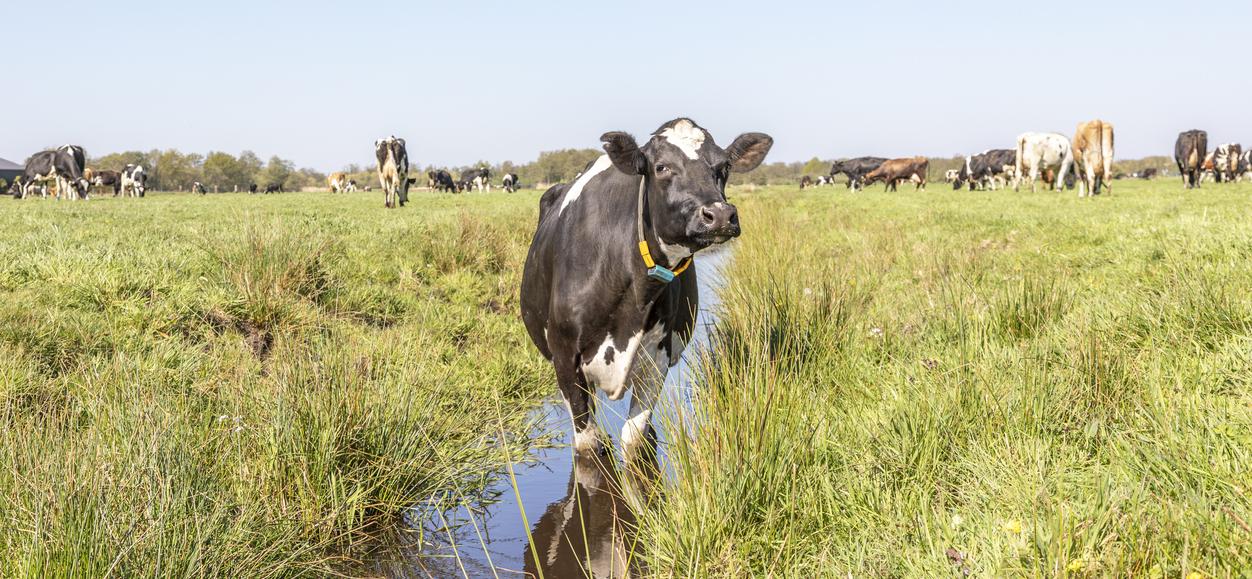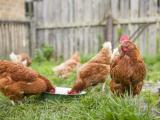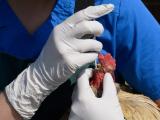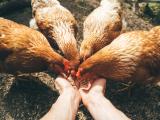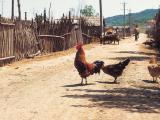The detection of highly pathogenic avian influenza (HPAI) in dairy cows that had a puzzling illness syndrome, announced earlier this week, was a stunning twist in the story of a H5N1 virus that has been circulating globally, including in US birds since early 2022.
As federal veterinary officials and their state and local research partners continue their investigations, the findings have prompted a flurry of new questions among livestock and influenza experts. For now, they say it's not clear if HPAI was the only cause of the mystery illness in cows. Also, experts say the presence of dead wild birds that carried the virus at affected farms raises new issues about biosecurity in livestock settings.
In a notification yesterday to the World Organization for Animal Health, the US Department of Agriculture (USDA) said H5N1 is the subtype and belongs to the 2.3.4.4b clade, which has been circulating in many world regions and has spread all the way to Antarctica. The virus isolated from the cow samples descended from the B3.2 genotype first seen in wild birds in November 2023. An analysis found no markers for mammalian adaptation or antivirus resistance.
Is HPAI the sole cause of symptoms?
Joe Armstrong, DVM, a cattle production expert with the University of Minnesota, in a special episode of the University of Minnesota Extension's Moos Room podcast about beef and dairy issues, said the unexplained illness syndrome had been reported in certain dairy herds in the Texas panhandle and other locations since late January and early February.
Over several weeks, the animals were tested extensively for different illnesses, he said. "When they started coming up short on everything, they started thinking outside the box about what this could possibly be, and they started testing for highly pathogenic avian influenza."
So far, there's not enough evidence to confirm that HPAI is the sole cause of the symptoms, Armstrong said. More testing is needed in cows that fit the case profile. About 10% of the herds on outbreak farms were affected, especially mature mid-to-late–lactation cows, resulting in a 10% to 20% reduction in milk production.
They started thinking outside the box about what this could possibly be, and they started testing for highly pathogenic avian influenza.
Armstrong said the illness profile is unusual because veterinarians are more likely to see illnesses in young stock.
He said the illness in cows lasts 10 to 14 days, peaking at about day 5 with a sudden drop in milk that is thicker and yellowish, similar to colostrum. Some of the animals had secondary illnesses, including mastitis and pneumonia.
The good news is that sick cattle are not dying, but the lack of necropsy tissues makes for a tricky diagnostic situation, Armstrong said. "So we're not getting a chance to look at as many samples and full sets of tissues as we normally would."
New biosecurity threats?
Jeff Bender, DVM, who directs the Upper Midwest Agricultural Safety and Health Center at the University of Minnesota and is a professor and hospital epidemiologist at the university's School of Public Health, told CIDRAP News that infected wild birds—already identified as the source of the virus—raise big questions about biosecurity on farms going forward.
"Feed security is one answer, but are there other ways to discourage wild bird contact?," he asked. Experts have said shared contaminated water sources are another likely source and are thought to have played a role in the recent spread of the virus from poultry to baby goats at a farm in western Minnesota.
We also need to be watching cats and other wildlife that are frequently found around livestock facilities for any illnesses or unexplained deaths.
Removing or draining water sources on farm fields might be an option, but Bender said that would be difficult and impractical.
Armstrong said it will be hard to keep birds out of barns and birds and livestock separate. "Because we know a little bit about how this virus acts, we also need to be watching cats and other wildlife that are frequently found around livestock facilities for any illnesses or unexplained deaths," he added.
Has avian flu in cattle been flying under the radar?
Thijs Kuiken, DVM, PhD, with the department of viroscience at Erasmus University in the Netherlands, said serologic studies in cattle would help clarify if past epidemics in cattle were missed in different parts of world, including parts of Europe that had a high burden of illnesses in wild birds and poultry.
Like Armstrong, Kuiken also wonders if the cows' symptoms are solely due to HPAI. "Past human influenza virus infections in dairy cattle were associated with a so-called 'milk drop syndrome,' which has some similarity to the clinical signs of the currently observed 'mystery disease,'" he said in an e-mail.
From a virologist's perspective, Kuiken said the findings raise several more questions, such as whether the HPAI samples from cattle in Texas and Kansas are closely related to each other or suggest separate introductions.
Past human influenza virus infections in dairy cattle were associated with a so-called 'milk drop syndrome.'
Bender and Kuiken said another question is whether the virus can spread from cow to cow or if cows are more likely to contract the virus from a shared source such as contaminated water or feed or pastures contaminated by infected wild birds.
Kuiken also said scientists will be looking for any differences between the virus that infected wild birds on the farm and those that infected cows in terms of the ability to infect cattle, other than obvious mutations for mammalian adaptation.
Was there live virus in milk?
Federal health officials and veterinary experts have emphasized that the risk to human health is low, due to milk pasteurization, which inactivates bacteria and viruses, and strong safeguards in place to prevent milk from sick cows from entering commerce.
However, experts wonder if scientists will find live virus in milk samples from the sick cows.
Armstrong said the possibility that that infectious virus might be in milk from sick cows is another reason to avoid drinking raw milk.
